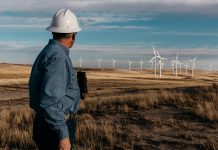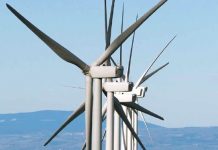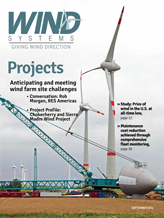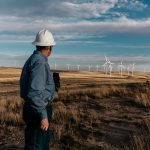The wind energy project pace set late last year continues — and then some.
That’s the story told by AWEA’s latest quarterly industry market report, which reveals continued strong under-construction numbers headed into the second half of the year. Second quarter numbers reveal a record number of projects currently under construction, as the wind industry ramps up to capitalize on the 2013 Production Tax Credit (PTC) extension.
Currently over 14,000 megawatts of wind energy are under construction in the U.S. across more than 100 projects and 21 states. The bulk of the activity is happening in the wind-rich regions — from North Dakota and Minnesota, down through Kansas, Oklahoma and Texas.
Technology Taps Wind-Rich Regions
In those regions, technological innovations including larger rotor diameters and improved control systems and gearboxes have allowed developers to offer historically low power purchase agreement (PPA) prices. One notable difference on the technology front: Whereas several years ago turbine designers pushed to develop turbines with higher capacity ratings, today’s turbine technology focuses more on higher capacity factors. The outcome: Preliminary data from the Department of Energy reveals an average 2013 wind PPA price of $25/MWh focused around the nation’s interior region, cheaper than at any time before.
As result, utilities, eager to take advantage of these historically low prices brought on by technological advancements and coupled with the extension of the PTC, have signed more than 9,000 MW of long-term contracts in 2013-14. These contracts have been touted for their economic benefits: consumer savings delivered over the life of the project, all while offering long-term hedges against fuel price volatility and future carbon regulations.
Stuart Solomon, president and COO of Public Service Company of Oklahoma (PSO) recently described his company’s purchase of nearly 600 MW of wind power as “extraordinary pricing opportunities that will provide substantial savings for our customers.” Solomon knows what he’s talking about: PSO’s contracts will reduce customer costs by $53 million in the first year alone, with annual savings growing over the 20-year contract life.
These projects are also being built in some of the regions hardest hit by recent and ongoing drought. As wind power uses no water for electricity generation, its water-saving attributes are hugely attractive to utilities and jurisdictions.
Other Factors Converge
Other factors are also allowing companies to focus on what they do best — build wind farms. The IRS’s recent guidance on the physical work test, project ownership transfers and safe harbor provisions adds additional clarity for wind projects going forward.
Meanwhile, still another factor driving the current construction boom is at play. Corporate purchasers are investing in new wind generation. 2014 has seen new PPAs announced by Microsoft, for electricity coming from an Illinois wind farm, and Walmart, for power provided by a Texas facility. This year also has brought agreements between Google and Facebook for wind power from MidAmerican Energy’s Wind VIII project in Iowa, IKEA’s purchase of an Illinois wind project and the Mars Corporations’ investment in a Texas project.
This activity is driven by corporations’ internal sustainability goals, but also by the opportunity to save on energy bills — highlighting how wind power is both good for the environment and good for these businesses bottom lines. Even behind the meter, on-site generation is on the rise, with utility-scale turbines under development at a military base, a brewery, and a produce processing plant.
Texas Still Unrivaled
Perhaps the greatest driver of this construction boom is the completion of the Competitive Renewable Energy Zone (CREZ) transmission lines in Texas. Recognizing that projects wouldn’t get built without transmission, and that transmission providers wouldn’t build lines without generators, the proactive transmission planning and broad cost allocation that took place under Texas’s CREZ initiative is ensuring that the state will remain a world leader in wind power.
Texas has led the nation in installed with capacity since 2006. That will continue. At the end of the second quarter, more than 8,000 MW were under construction across the state, in both the Southwest Power Pool (SPP) and the Electric Reliability Council of Texas (ERCOT). In short, more wind is now under construction in Texas than is currently installed in any other state. More than 7,300 MW have interconnection agreements with ERCOT for 2014-2015 alone.
In addition to the 14,600 MW under construction, the U.S. wind industry currently has an installed capacity of 61,946 MW, with utility-scale projects located in 39 states plus Puerto Rico. It is now up to Congress to continue the incentive for private investment in new wind farms so that the wind industry can continue providing clean, homegrown energy to American consumers.
For more information on the Second Quarter Market Report, please visit www.awea.org/2Q2014.


































